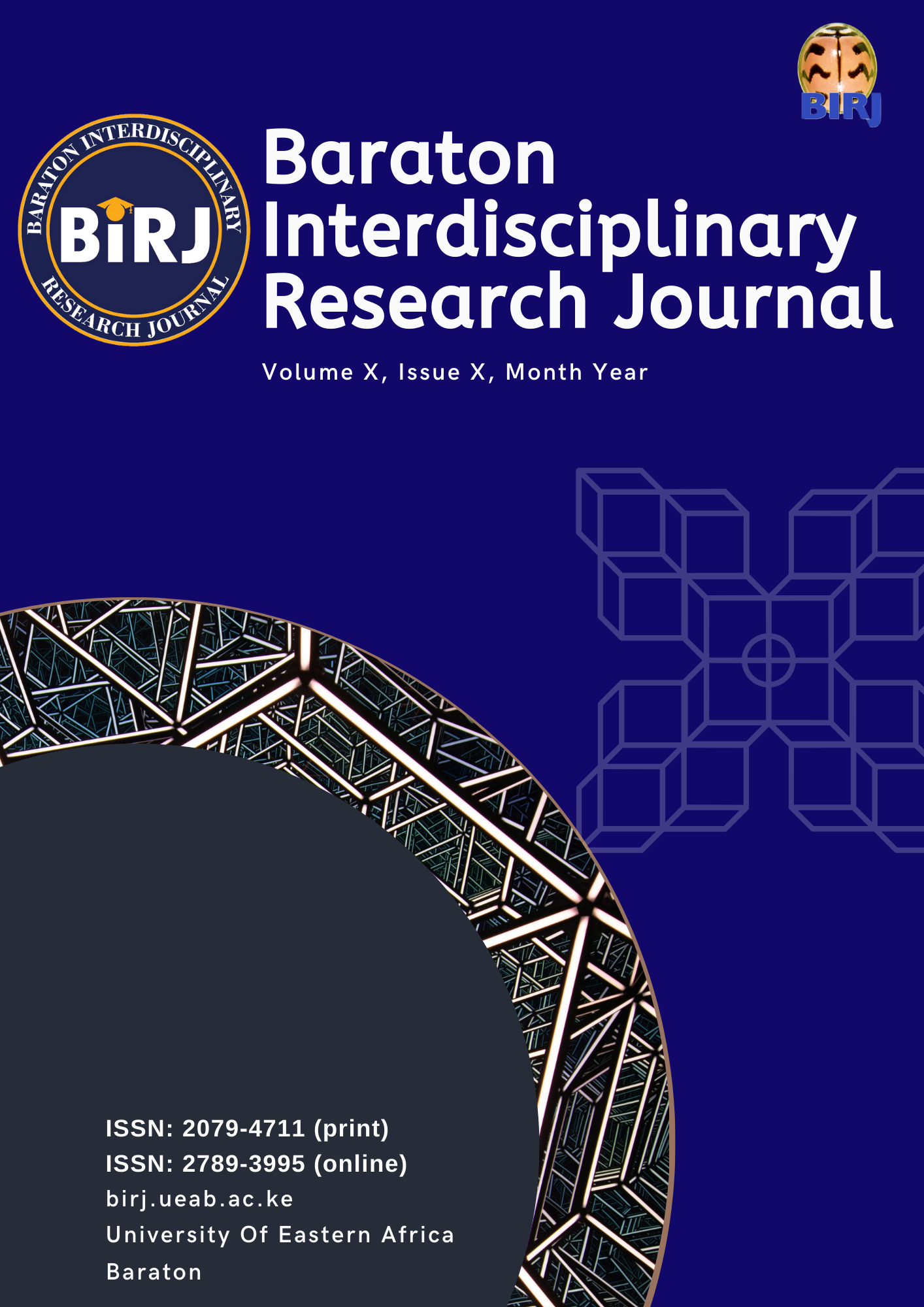PHONOLOGICAL ADAPTATION OF KISWAHILI LOANWORDS INTO GĨ-GĨCHŨGŨ DIALECT OF GĨKŨYŨ LANGUAGE
Abstract
Borrowing is evidently a component of language growth and is, thus, a continuous process.
No language whose speakers have had contact with any other language is completely free of
borrowed forms. Gĩkũyũ language has had long contact with Kiswahili from early last century. As
a result, borrowing is evident. This paper explores the various phonological strategies used by
Gĩ-Gĩchũgũ dialect of Gĩkũyũ language in borrowing words from Kiswahili. To do this, the paper
applies the Source-Similarity model, one of the most recent strands of Optimality Theory. This
model exploits loanword specific faithfulness constraints that impose maximal similarity between the
perceived source form and its corresponding spoken loanword. Using the Source-Similarity model,
this paper shows that Gĩ-Gĩchũgũ uses such strategies as deletion, preservation, substitution as
well as importation of consonants. On the other hand, the adaptation strategies used for vowels are
insertion, preservation, and substitution. These strategies ensure that the borrowed words stay as
similar as possible to the source forms.
Downloads
Published
Issue
Section
License
License Terms
All articles published in the Baraton Interdisciplinary Research Journal (BIRJ) are licensed under a Creative Commons Attribution-NonCommercial-ShareAlike 4.0 International License (CC BY-NC-SA 4.0).
This license permits users to share (copy and redistribute) and adapt (remix, transform, build upon) the material for non-commercial purposes, provided that proper attribution is given to the original authors, a link to the license is included, and any derivative works are distributed under the same license.
Full license details: https://creativecommons.org/licenses/by-nc-sa/4.0/

